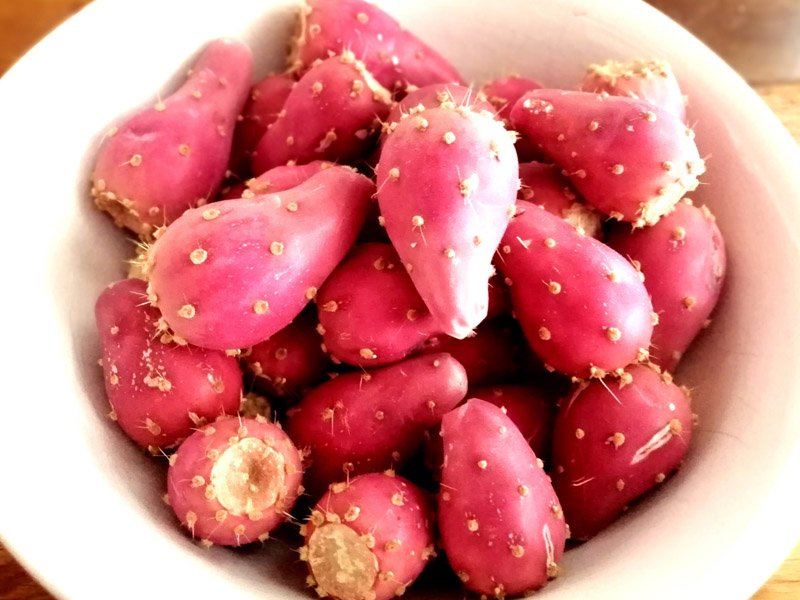Prickly Pear: Uses and Benefits
Monsoon season in Arizona brings clouds, thunder, rain and flash floods in the mostly dry washes along the desert, and it announces the end of the hot season. Another remarkable event that monsoon season brings is the ripening of fruits in the prickly pear plants that dot the hillsides along the Sonoran Desert. The prickly pear’s fruits are an important source of food for a large number of animal species, including insects, birds, rodents, coyotes, javelinas and deer, and they have also provided food to several native groups that made the Sonoran region their home.
Prickly pears are members of the cactus family and classified in the genus Opuntia spp. There are about 180 accepted species, and they are found from southern Canada all the way to Patagonia in Argentina. They have adapted to a great diversity of environmental conditions that allowed their dispersal and evolution into numerous species.
Prickly pears have been used since pre-contact times mainly in Mexico where there are more than 100 different species and at least 15 species are used intensively for human consumption. The Aztecs from the central valleys of Mexico gathered and consumed young pads and fruits of some of the species and through a process of selection through thousands of years; they obtained some spineless forms with sweet fruits with a high sugar content.
The Fruits of Prickly Pears
Fruits in prickly pears come in two types: dry as in some species in northern Arizona or fleshy as in the native Englemann’s prickly pears (Opuntia engelmannii) that grow around Phoenix. Fleshy and juicy fruits are favored for human consumption, and depending on the species, you can have fruits with more or less sugar content; with the wild species having 7 to 9 Brix degrees. The Engelmann’s prickly pear is within this range and when used to make syrup you need to add sugar. One of the species that have been selected for fruit is the Indian-fig prickly pear (Opuntia ficus-indica) and some of its cultivars in Mexico have normally 12 to 14 Brix degrees and some can reach up to 16 Brix degrees. The fruits in the Indian fig vary in color when ripe from green, yellow, orange, red to dark purple and are commonly sold in markets and grocery stores. The fruits can be processed to extract juice and make drinks, syrup, margarita mix, jelly, jam, candy and more.
Medicinal Properties of Prickly Pears
For nearly 30 years several prickly pear products have been sold for its attributed medicinal properties for treating diabetes, lowering blood sugar levels, as fiber source, etc., although most products are currently labeled as diet supplement. The fruits have a high content of antioxidants and have been considered as a super fruit similar to acai, pomegranate and cranberry.
How to Make Prickly Pear Juice:
The juice in prickly pears is a very sweet liquid and it can be used to prepare various types of drinks. Place the fruits in a blender and pulse for 5to 10 seconds to separate the pulp from seeds. The heavier seeds will sink to the bottom of the blender and the juice and pulp can be decanted. This juice can be diluted in water, and by adding ice, it makes a very refreshing drink.
How to Peel Prickly Pear Fruits:
The prickly pear fruits are usually eaten fresh by peeling the rind off and eating the pulp. Removing the rind is the most difficult part due to the presence of numerous glochids (stickers) covering the areoles in the outer skin of the fruit. The stickers can be removed by placing the fruits in a plastic bucket and brushing the fruits under running water. The rind is removed by making one cut across the top and bottom of fruit and a third cut from top to bottom. You can then separate the rind by pushing your fingers between the rind and pulp.
